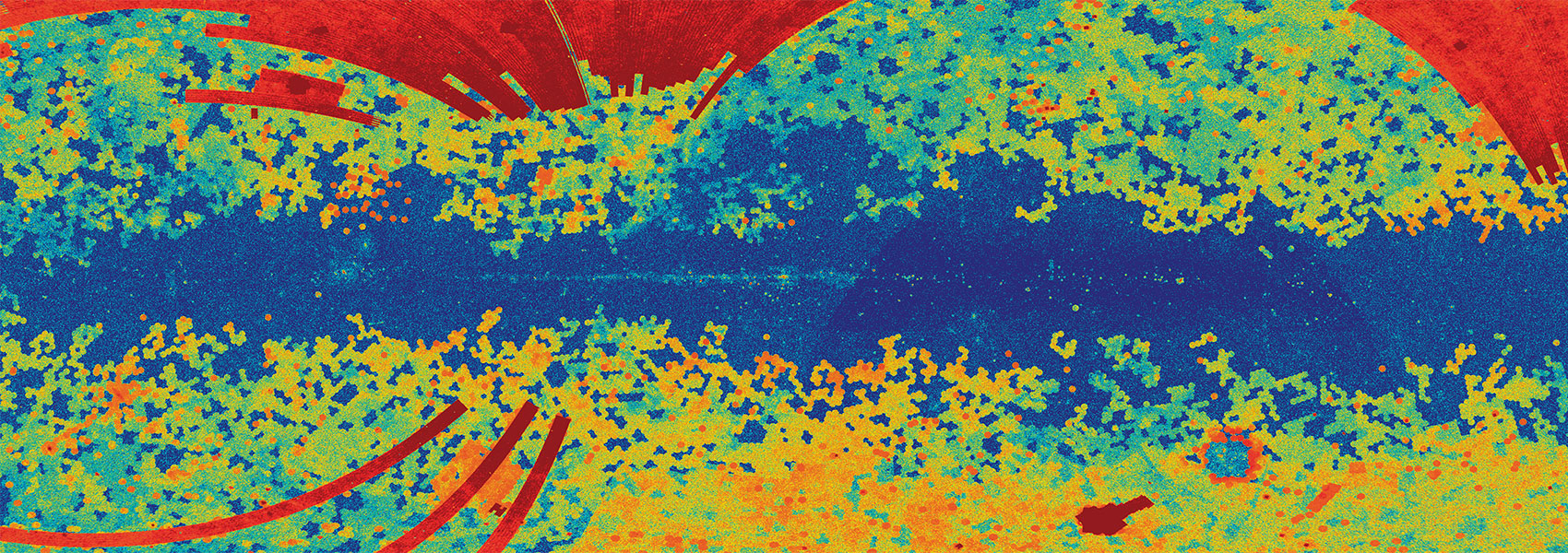July
2002
•
2002AJ....124...33H
Authors
•
Holden, B. P.
•
Stanford, S. A.
•
Squires, G. K.
•
Rosati, P.
•
Tozzi, P.
•
Eisenhardt, P.
•
Spinrad, H.
Abstract
•
We present our discovery observations and analysis of RDCS 1317+2911, z=0.805, and RDCS 1350+6007, z=0.804, two clusters of galaxies identified through X-ray emission in the ROSAT Deep Cluster Survey (RDCS). RDCS 1317+2911 has an unusual morphology in our Chandra observations, with an asymmetric surface brightness profile and a bend in the distribution of X-ray emission. In contrast, RDCS 1350+6007 appears to be more like low-redshift clusters, with β=0.49+/-0.06 and rcore=165+/-5 kpc (Ωm=0.3, ΩΛ=0.7, H0=65 km s-1 Mpc-1), though it also has an elliptical, slightly asymmetric surface brightness profile. We find a temperature of 3.7+1.5-0.9 keV and a bolometric luminosity of 8.2+1.7-1.6×1043 ergs s-1 for RDCS 1317+2911, and a temperature of 4.9+1.3-0.9 keV and a bolometric luminosity of 4.1+0.5-0.4×1044 ergs s-1 for RDCS 1350+6007. Our weak-lensing analysis of RDCS 1350+6007 confirms the general shape of the inner density profile but predicts twice the mass of the model based on the X-ray profile. There are two possibilities for this discrepancy: either there is a significant amount of mass near the redshift of the cluster that has not yet fallen into the potential well and shock-heated the gas, or, as we only see the X-ray emission from the core of the cluster, our β model fails to describe the true shape of the underlying potential. We combine the X-ray luminosities and temperatures for RDCS clusters of galaxies with such measurements of other clusters at high redshift (z>0.7) and fit the luminosity-temperature relation. We find no statistically significant evolution in the slope or zero point of this relation at zmedian=0.83. This result is in agreement with models of intracluster medium evolution with significant preheating or high initial entropy values. Quantifying the bolometric luminosity-temperature relation as L=L6(1+z)A(T/6 keV)α, we find α=2.9+/-0.4, L6=8.7+/-0.9×1044 ergs s-1 and A=0.3+/-0.2, or A=0.4+/-0.2, depending on which low-redshift luminosity-temperature relation we compare with. With this result, we rule out at the 5 σ level the self-similar scaling model of intracluster medium evolution. We discuss how low-temperature, high-redshift clusters of galaxies will allow us to improve on this result, and we announce the discovery of two such objects, CXOU J0910.1+5419 and CXOU J1316.9+2914. Based in part on observations obtained at the W. M. Keck Observatory, which is operated as a scientific partnership among the California Institute of Technology, the University of California, and the National Aeronautics and Space Administration. The Observatory was made possible by the generous financial support of the W. M. Keck Foundation. Also based in part on observations obtained at Palomar Observatory and with the Chandra X-Ray Observatory.
Links




